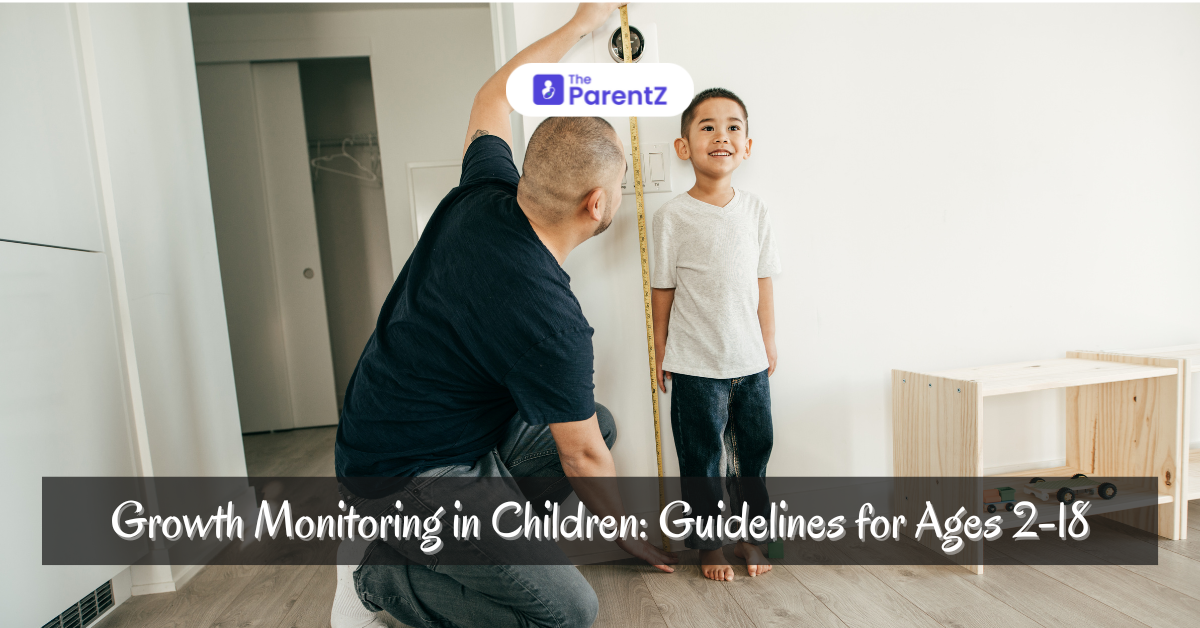Monitoring growth is essential in pediatric healthcare, reflecting a child’s overall health and development. Proper growth tracking can help identify early signs of undernutrition, obesity, or other health conditions. This article combines Indian and international guidelines, including those from the Indian Academy of Pediatrics (IAP), World Health Organization (WHO), and the UK 1990 growth charts, to offer a comprehensive approach for children aged 2-18. Growth monitoring involves regularly measuring a child’s height, weight, and Body Mass Index (BMI) to ensure they are growing according to expected milestones. In India, pediatricians follow IAP growth charts tailored to the Indian population, but combining these with WHO and UK standards allows for a more global perspective.
How to Measure Height
Accurately measuring a child’s height is crucial for effective growth tracking. Here’s how:
• For children above 2 years who can stand: Use a stadiometer for the most accurate results. Ensure the child stands barefoot with their heels, buttocks, and head touching the vertical board. Measure to the nearest millimeter.
• For younger children (2-3 years) who cannot stand well: Use a length board. The child should lie flat on the board, ensuring their head is aligned, and the legs are fully extended. Again, measure to the nearest millimeter.
Measurements should be recorded in centimeters (cm) and regularly plotted on growth charts to track consistency over time.
How to Measure Weight
Weight is an important indicator of a child’s nutritional status. Here’s how to measure weight accurately:
• Use a class III clinical electronic scale set to metric units (kg). Make sure the scale is properly calibrated.
• Ensure the child is barefoot and wearing minimal clothing to avoid excess weight from garments. Measure the weight to the nearest 100 grams.
For consistency, it’s best to measure weight at the same time of day, preferably in the morning, to avoid variations due to fluid retention or food intake.
Tracking BMI
BMI helps determine whether a child’s weight is appropriate for their height. It is calculated by dividing the child’s weight (kg) by their height squared (m²). Once calculated, the BMI is plotted on centile charts to check if the child falls within the healthy range. A BMI above the 97th centile may indicate obesity, while below the 3rd centile suggests undernutrition.
Understanding Growth Charts
Growth charts provide the standards against which a child’s development is compared. In India, the Indian Academy of Pediatrics (IAP) growth charts are used, reflecting the unique growth patterns of Indian children. These charts show centiles for height, weight, and BMI.
To add a global perspective:
• WHO Child Growth Standards are used for children under 5 years of age.
• UK 1990 Growth Charts can be useful for children aged 5-18 years.
Plotting regular measurements on these charts allows pediatricians to assess whether a child is growing as expected or if intervention is required.
When to Seek Medical Advice
While small variations in growth are normal, there are some red flags that indicate the need for further medical evaluation:
• A child’s growth deviates more than 2 centile spaces on a growth chart.
• The child’s BMI is in the undernutrition or obesity range.
• Delays in puberty (no signs by age 13 for girls or 14 for boys).
If any of these occur, it is important to consult a healthcare professional for further investigation, which may include hormonal tests, nutritional assessments, or imaging studies.
Conclusion: The Importance of Regular Growth Monitoring
Regular growth monitoring helps detect potential health issues early, ensuring that children receive timely interventions if necessary. Combining Indian and international growth standards offers a holistic approach to tracking a child’s growth, allowing for a balanced understanding of both cultural and genetic factors. By consistently monitoring height, weight, and BMI, parents and pediatricians can ensure healthy development for children aged 2-18.








Be the first one to comment on this story.